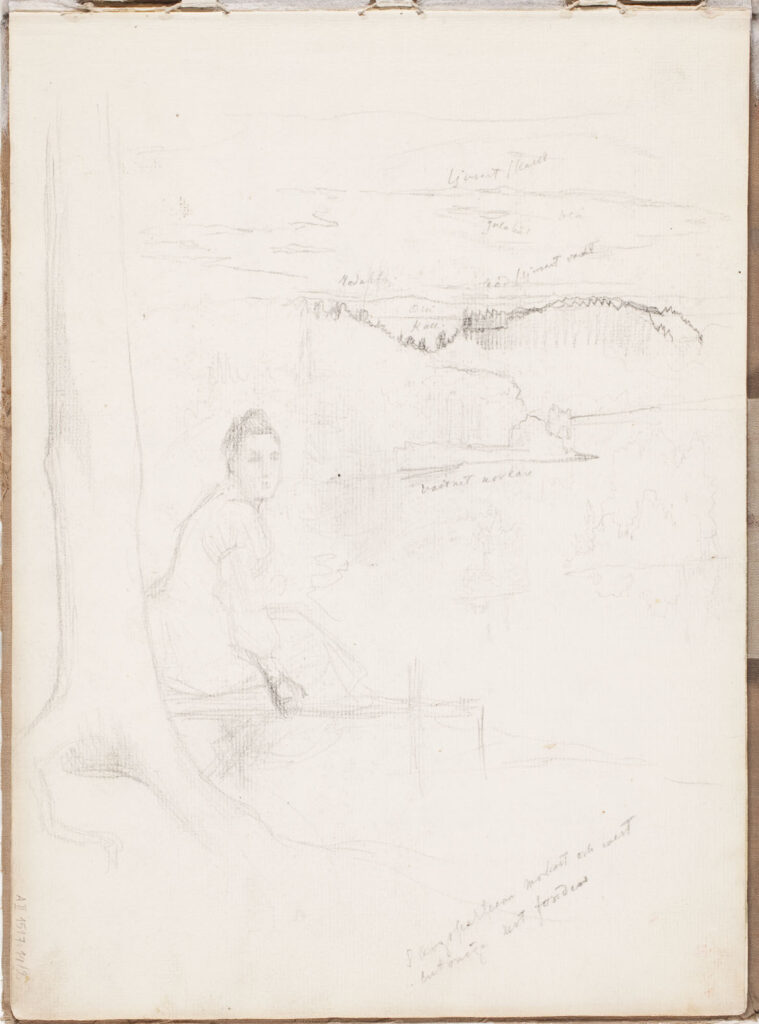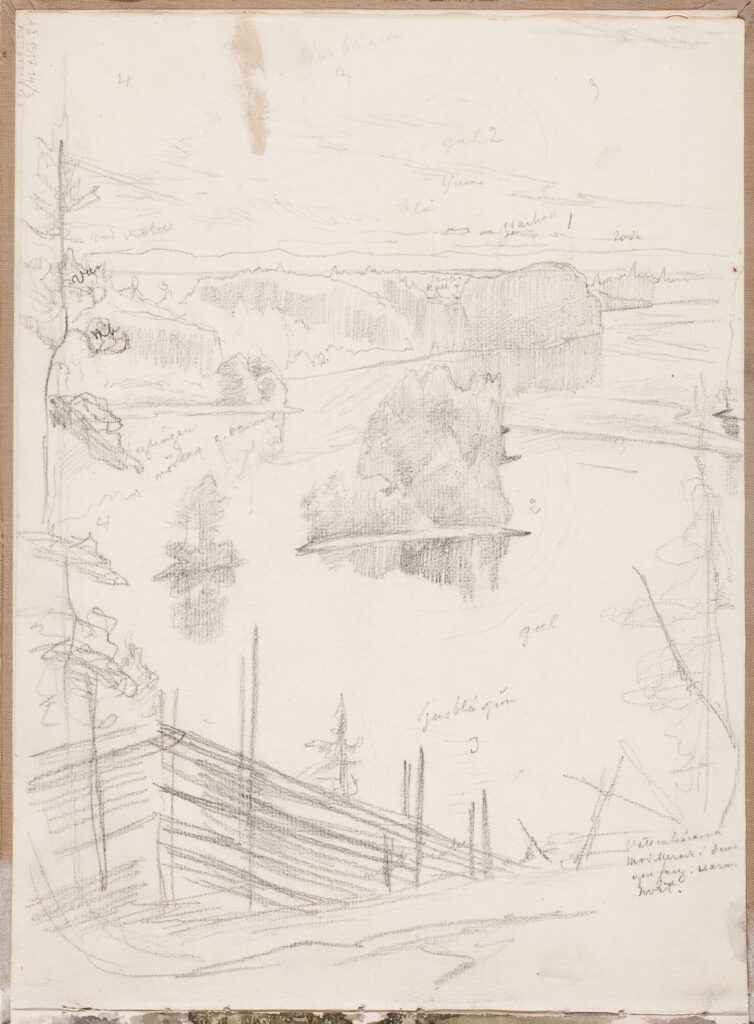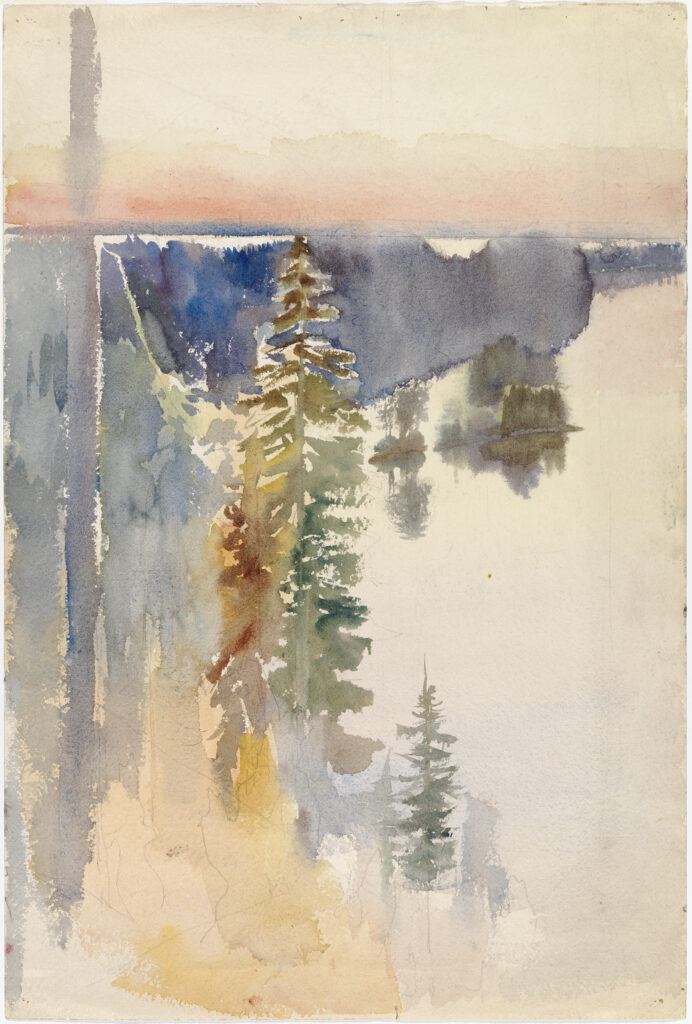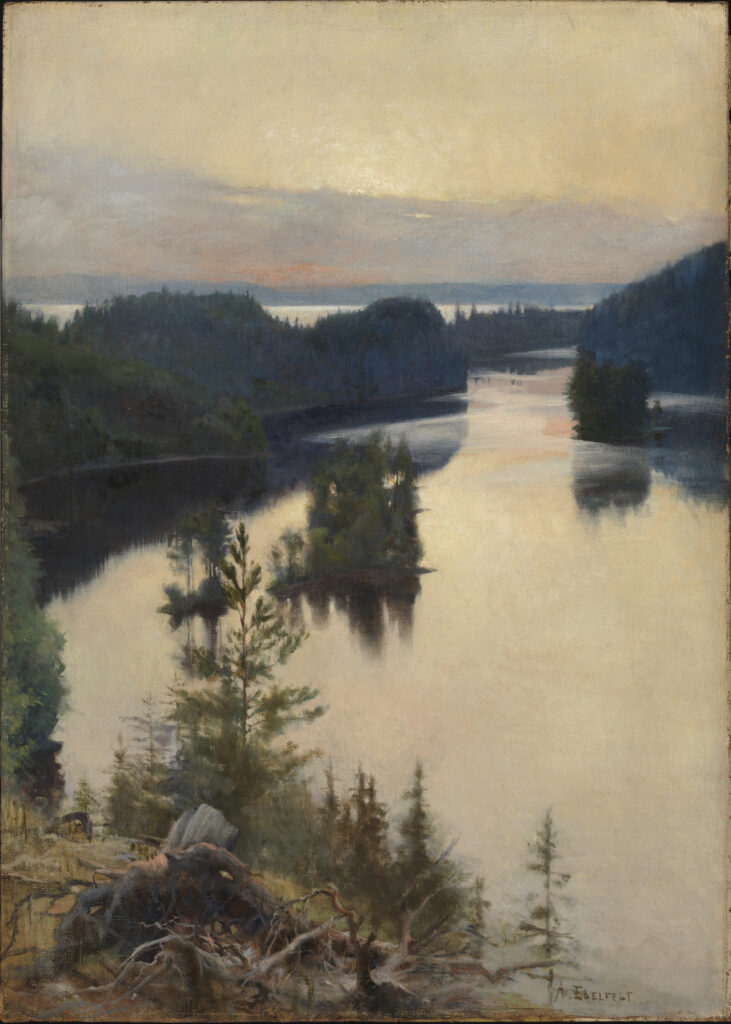
The landscapes of Kaukolanharju have inspired both local and visiting artists. The landscape has been immortalized by, for example, Magnus von Wright, Robert Wilhelm Ekman and, most famously, Albert Edelfelt.
Harju artists
Kaukolanharjun maisemat ovat innoittaneet niin paikallisia kuin vieraileviakin taiteilijoita. Maisemaa ovat ikuistaneet esimerkiksi Magnus von Wright (1805–1868), Robert Wilhelm Ekman (1808–1873) sekä kuuluisimpana Albert Edelfelt (1854–1905).
Sukulaistensa luona Saaren kartanossa kesää viettänyt von Wright luonnosteli 1840-luvulla harjun maisemasta lyijykynätöitä sekä myöhemmin öljyvärimaalauksen, jonka alareunaan taiteilija on perimätiedon mukaan kuvannut kartanon väkeä sekä ylioppilaslakkipäisen itsensä. Robert Wilhelm Ekman puolestaan tutustui Kaukolanharjuun maalatessaan Tammelan kirkon alttaritaulua. Ekman kuvasi näkymän Kaukolanharjulta hiili- ja pastellipiirroksena vuonna 1871. Synkkäsävyiseen teokseen on vaikuttanut taiteilijan vaimon menehtyneen samana vuonna.
Von Wrightin ja Ekmanin teokset kuvaavat molemmat suomalaista järvimaisemaa tyypilliseen tapaan korkealta näköalapaikalta nähtynä. Molemmat teokset ovat todennäköisesti olleet myös tuttuja Albert Edelfeltille, joka teki myöhemmin oman versionsa Kaukolanharjun maisemasta.
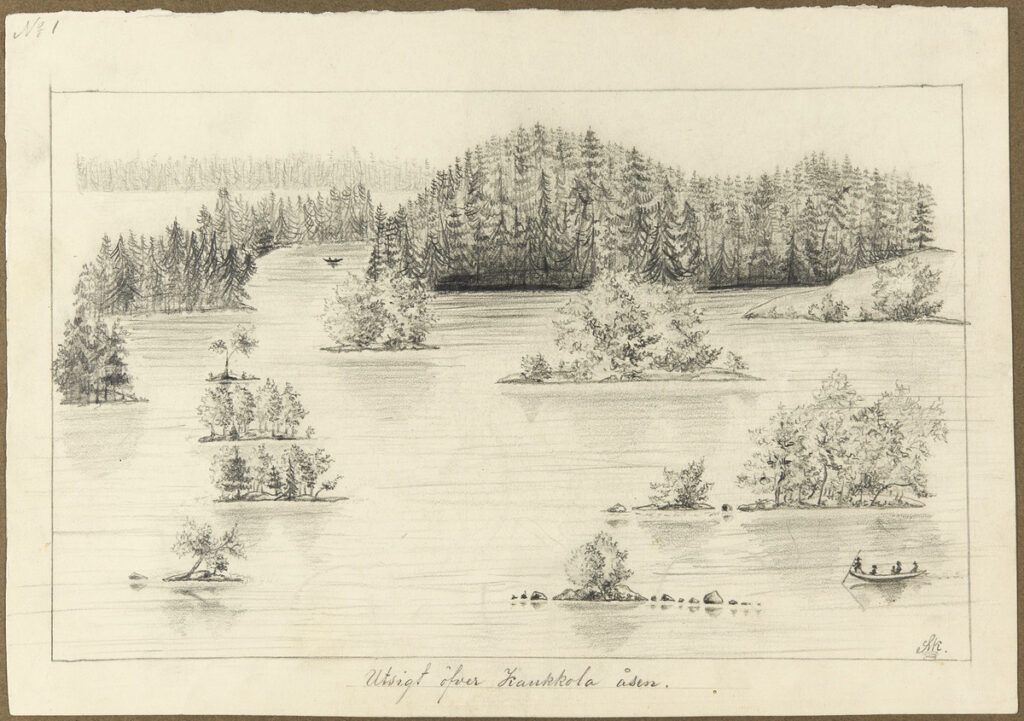
Kajanus, S. Näkymä Kaukolanharjulta. 1873-1899. Museum Agency.
Albert Edelfelt
Albert Edelfelt (1854–1905) oli yksi keskeisimmistä Suomen taiteen kultakauden taiteilijoista. Edelfelt opiskeli ja työskenteli myös ulkomailla, ja tuli tunnetuksi niin Pariisin salongeissa kuin Euroopan hoveissakin.
Edelfelt ehti uransa aikana maalata niin tunnettuja muotokuvia kuin maisemamaalauksia. Pariisilaisten kaunottarien lisäksi Edelfelt kuvasi kotimaisia historiallisia ja uskonnollisiakin aiheita. Hänen tyylinsä vaihteli historiallisesta romantismista aina naturalistiseen ja impressionistiseen tyylisuuntaan.
Taiteilijana Edelfeltin on todettu olleen eräänlainen keskitien kulkija. Varsinainen uudistaja tai kapinallinen hän ei ollut, mutta loistava maalari, jonka teokset tekivät Suomea tunnetuksi maailmalla. Edelfeltin tunnetuimpia teoksia ovat esimerkiksi ”Kuningatar Blanka” 1877, ”Lapsen ruumissaatto” 1879 ja ”Ruokolahden eukkoja kirkonmäellä” 1887.
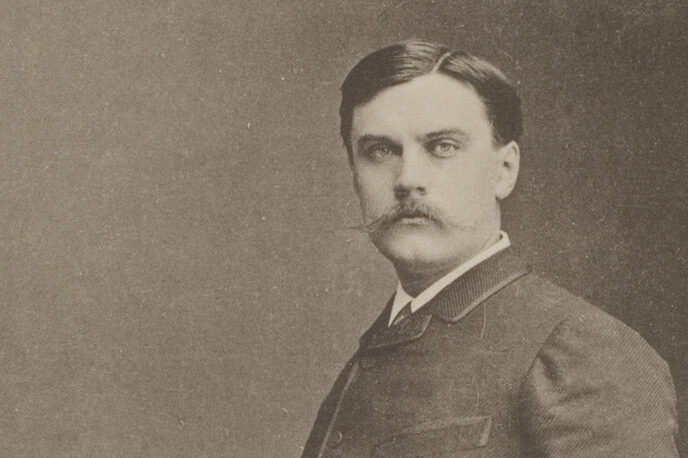
Edelfelt on Kaukolanharju
Edelfeltin ulkoilmateoksista monet sijoittuvat Porvoon Haikkoon, jossa taitelijalla oli kesähuvila. Yksi taiteilijan tunnetuimmista maisemamaalauksista sijoittuu kuitenkin Sisä-Suomeen ja Tammelan Kaukolanharjulle.
Harju ympäristöineen tuli Edelfeltille tutuksi, kun taiteilija nai lapsuuden ystävänsä, Saaren kartanon tyttären Anna Elise (Ellan) de la Chapellen (1857–1921) vuonna 1888. Nuori pari vietti kesiä ja jouluja vaimon kotikartanossa, jonka maisemat ja ihmiset inspiroivat Edelfeltiä. Hän maalasi esimerkiksi Saaren kartanon rakennuksia, sekä Portaan kylässä teoksensa ”Veräjällä” 1889.
Kuuluisin paikalla syntyneistä teoksista on Kaukolanharju auringonlaskun aikaan, mutta Edelfelt luonnosteli harjulla myös toisenlaisia versioita. Luonnoksista on esimerkiksi nähtävissä paikalla sijainnut raja-aita, ja toiseen on taiteilija luonnostellut vaimonsa istumassa harjulla.
Photos: Edelfelt, A. Näköala Kaukolanharjulta. National Gallery / Ateneum Art Museum. Edelfelt, A. Sketches from Kaukolanharju.
Kaukolanharju at sunset
Edelfeltin teos Kaukolanharju auringonlaskun aikaan (1889–1890) kuvaa maisemaa harjulta luoteeseen Pyhäjärven ja Kuivajärven väliselle salmelle. Se kuvaa pian häviävää kesäyön hetkeä, jolloin auringonlasku on kultaisimmillaan ennen sen painumista horisontin taakse. Maisemaa katsova voi todeta Edelfeltin rajanneen teoksensa tarkasti. Paikalla sijainneet raja-aidat ja kaikki merkit asutuksesta ovat jääneet lopullisen teoksen ulkopuolelle, jolloin luonto vaikuttaa lähes koskemattomalta.
Edelfelt viimeisteli Kaukolanharjulla luonnostelemansa työn Pariisissa 1890, jossa se myös myytiin. Teos ehti olla pitkään kateissa, ennen kuin se viimein ostettiin Ateneumin kokoelmiin 1970-luvulla. Vaikka Edelfeltiä ei ole varsinaisesti pidetty maisemamaalarina, on Kaukolanharju auringonlaskun aikaan tunnetuimpia suomalaisia maisemamaalauksia.

Albert Edelfelt. Kaukolanharju at sunset. National Gallery / Ateneum Art Museum
Parhaiten teoksen valmistumista kuvaa taitelijan kirje äidilleen:
”Suuri auringonlaskumaisema harjulta on kirotun vaikea. Teen työtä kuin hevonen, mutta en saa siitä hyvää. Eilen olin aivan epätoivoinen. Vaikutelma kestää kaiken kaikkiaan neljännestunnin; silloin vesi välkehtii hopean, rubiinin, topaasin ja on yksin värisenä vaihtaen alituiseen sekä muotoaan että väriään. Ja yrittäessäni kuvata näitä metsäisiä saaria, jotka kaikki ovat tummansinisenmustia niin että niiden väliin tulee ilmaa ja vettä siten, että se näyttää tasaiselta ja sen etäisyys näköpiiriin rajaa monen virstan pituiselta, saa hiukseni harmaiksi.”
Albert Edelfelt
Lue lisää: Kaukolanharjun näkötorni
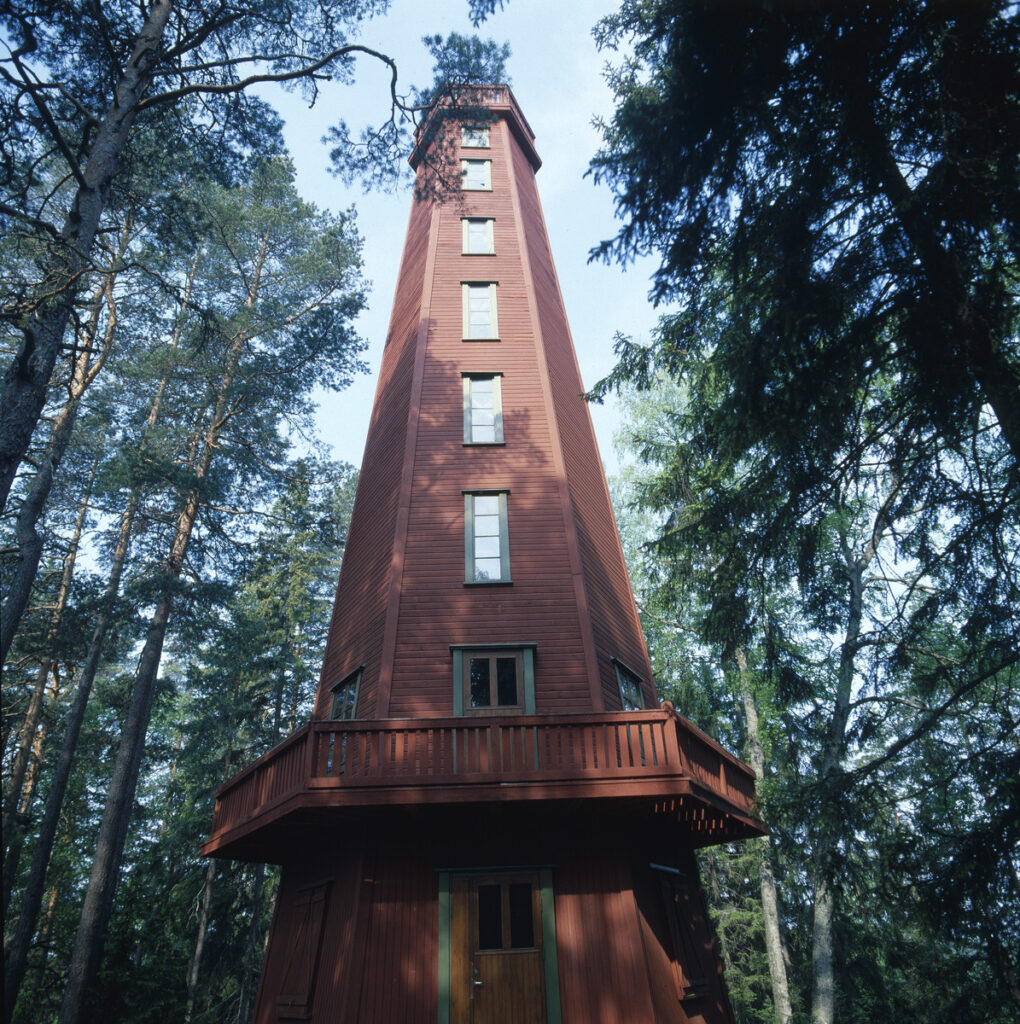
Suomen Matkailuyhdistys kehotti suomalaisia vuonna 1924 näkötornien rakentamiseen luonnonkauniille seuduille. Lounais-Hämeen vaikuttajat ryhtyivät tuumasta toimeen. Tammelan Kaukolanharjun näkötornin avajaisia juhlittiin heinäkuussa 1926. Juhlapuheissa näkötornin toivottiin kehittävän niin kauneusaisteja kuin jalostavan sisäistä ihmistämmekin sekä opettavan kunnioittamaan Jumalaa, rakastamaan lähimmäistä ja kotiseutua sekä koko isänmaata. Näkötornista avautuva maisema innoitti ainakin taiteilija Albert Edefeltiä, joka maalasi yhden tunnetuimmista suomalaisista maisemamaalauksista “Kaukolanharju auringonlaskun aikaan”.
TAMMELA MUNICIPALITY


